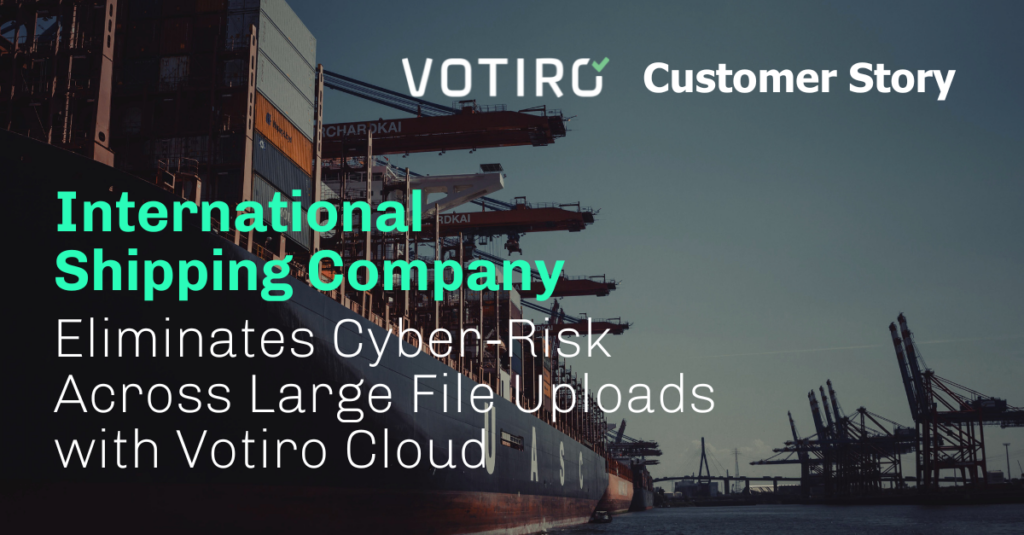Waves of Risk: The Growing Cybersecurity Crisis in Maritime Trade

Cybercriminals are actively attacking and interrupting supply chains by targeting maritime organizations with ransomware. DP World Australia, which manages 40% of Australian shipping, is the latest to fall victim to these attacks, leaving over 30,000 shipping containers backed up. Operations such as theirs are increasingly attractive targets for cybercriminals, primarily due to their reliance on digital systems essential for maritime activities. These systems are crucial for efficient trade yet are not properly maintained and secured, creating easy targets for attackers.
Cybercriminals are not backing down on these attacks, having increased attempts by 400% in 2020. Maritime organizations must step up their cybersecurity as it’s no longer about protecting individual companies but safeguarding global trade and logistics networks from significant disruptions. A focused cyberattack across multiple shippers could devastate economies worldwide, blocking up ports and stopping international trade.
How We Got Here
The current crisis in maritime cybersecurity traces back to a few critical failures. Primarily, the extensive digitalization of marine operations has been a double-edged sword. While it has brought efficiency and modernization, the reliance on technologies like the Industrial Internet of Things (IIoT) and internet-dependent systems has opened new avenues for cyber threats. This technological advancement has not been matched with equivalent cybersecurity measures, exposing systems to sophisticated cyberattacks.
Compounding this problem is the maritime sector’s inherent complexity, which often includes many stakeholders operating on a global scale. This complexity is further exacerbated by the prevalent use of outdated IT infrastructure in many parts of the industry. These antiquated systems lack the security features to defend against modern cyber threats, including the inability to scale to meet increases in shipping, making them easy targets for cybercriminals. The failure to update and secure these systems in line with current technological standards leaves these organizations in a potentially vulnerable state, heightening the risk of a catastrophic cyberattack.
The Flow of Threats
The maritime sector faces a multifaceted cybersecurity challenge, from vulnerable system endpoints to the ceaseless flow of data and information. Ports constantly receive diverse data sets for essential operations, including invoicing, weather analytics, positioning, inventories, and maintenance. This data, sourced from myriad origins, can inadvertently become a conduit for malware. Often, these risks are hidden within routine communications like emails or embedded in standard documents such as Excel sheets or PDF files.
When such files are accessed, they activate the embedded threats, leading to severe consequences. Opening a compromised file can trigger the deployment of ransomware, paralyze systems, or, even worse, create backdoors for cybercriminals. These unauthorized entries grant attackers direct access to a port’s internal resources using the credentials of the unsuspecting opener. This jeopardizes sensitive data and exposes critical maritime infrastructure to potential manipulation or sabotage.
Solving the Problem
Solving this problem takes work. It requires a multifaceted, holistic approach rather than a single solution. It comprehensively strengthens the cybersecurity posture across the maritime sector, beginning with shoring up IT infrastructure. This includes updating and fortifying existing systems to withstand modern cyber threats, which includes implementing robust solutions specifically designed to detect and neutralize malware. Without diving deep and tackling these issues across the board, this industry will remain open to attack.
Learn how Votiro helped a company in the shipping industry facing similar vulnerabilities close their security gap.

Improving Infrastructure & Operations
Addressing the cybersecurity challenges in the maritime sector requires a comprehensive strategy that touches on various aspects of technology and human resource management. Organizations must prioritize upgrading to current, supported versions for obsolete and unsupported operating systems, ensuring system software is regularly patched to guard against vulnerabilities. This shift modernizes the infrastructure and embeds a culture of proactive maintenance.
Simultaneously, the challenge of unsecured shipboard computer networks and the continuous connection of critical infrastructure with the shoreside calls for a robust network security framework. Implementing advanced encryption, firewalls, and intrusion detection systems can safeguard these networks. Additionally, enhancing access controls for third parties, including contractors and service providers, is essential. This involves stringent vetting processes, regular audits, and implementing layered access privileges based on roles. Such a holistic approach addresses the technical vulnerabilities while fostering a resilient, security-conscious work culture.
Stopping Malware in Real-time
A two-pronged approach is essential to stop malware in the maritime sector effectively. Firstly, utilizing antivirus (AV) software is crucial in detecting and eliminating known malware. These AV solutions are constantly updated to identify and neutralize the latest threats, providing a fundamental layer of defense. However, cybercriminals continually up-level their game, developing new attacks and modifying existing ones, creating a period where they are undetectable by traditional AV.
To account for this and augment existing AV, Content Disarm and Reconstruction (CDR) technology is vital. CDR works by deconstructing and rebuilding files using only known-safe components, effectively disarming potential threats. Unlike traditional detection-based methods, CDR doesn’t rely on identifying the malware; instead, it systematically reconstructs files to a harmless state, thereby adding a robust layer of defense against sophisticated malware attacks. Combining AV’s efficiency and CDR’s completeness, organizations create a comprehensive shield, significantly reducing the risk of successful malware intrusions.
Calming the Storm with Votiro
Maritime organizations don’t have to be easy targets for cybercriminals. They can build a proactive threat defense with Votiro as the foundation. Today, Votiro is a leader in file-borne threat prevention, actively protecting global organizations that handle hundreds of thousands of file transactions each year. From busy ports with complex supply chains to those handling international shipping and logistics, Votiro is trusted with the security of each file transaction.
Standing at the forefront of cyber defense, Votiro offers robust protection against hidden threats within benign-looking content. This approach combines immediate threat detection through antivirus capabilities with retrospective scanning. This dual strategy identifies known threats instantly and provides a record of any threats removed by CDR, showcasing the effectiveness of their technology in safeguarding maritime digital infrastructure.
Votiro transcends the basic requirements of cybersecurity by offering a solution that integrates effortlessly with current systems. Their API-focused approach provides immediate and powerful protection tailored for easy adoption. The process is highly efficient, with Software as a Service (SaaS) installations completed in just 10 minutes and on-premises setups taking only 90 minutes, ensuring minimal disruption to organizational workflows while establishing strong defense mechanisms against cyber threats.
Contact us today to learn how Votiro sets the bar to prevent hidden threats in files so that your employees and systems remain secure while maintaining productivity. And if you’re ready to try Votiro for yourself, start today with a free 30-day trial.
News you can use
Stay up-to-date on the latest industry news and get all the insights you need to navigate the cybersecurity world like a pro. It's as easy as using that form to the right. No catch. Just click, fill, subscribe, and sit back as the information comes to you.
Sign-up Here!
Subscribe to our newsletter for real-time insights about the cybersecurity industry.



